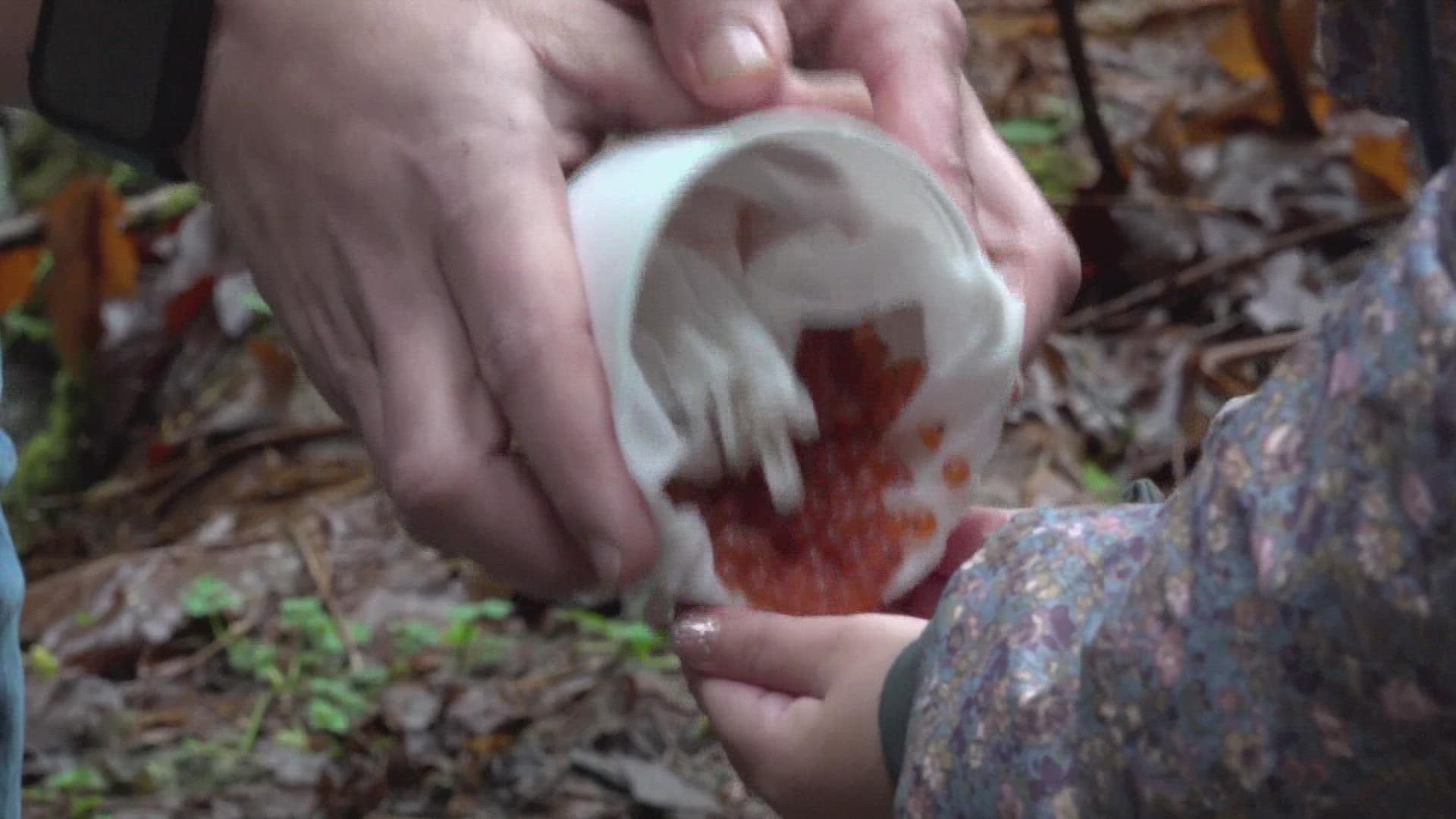KING COUNTY, Wash. — As they carefully place Kokanee salmon eggs into an incubator bed, a team with representatives from the King County Water and Land Resources Division, Snoqualmie Tribe and Trout Unlimited are hopeful it will give them a safe place to grow so they can survive, swim on to Lake Sammamish, and later return to spawn.
"It's to give them a chance," Snoqualmie Indian Tribe Assistant Director of Governmental Affairs and Special Projects McKenna Sweet Dorman said. "The Kokanee are threatened; they're dying out. This is the last run of Kokanee in the lake, this later run, the first two are extinct, they're extricated. So we're giving them a chance to help rebuild those numbers and the best possible chance to survive."
After being placed in the bed, Sweet Dorman says some eggs were already hatching-- and once they grow, many will go straight to the lake. The egg box provides protection from predators to give them the chance to do so.
Perry Falcone, Kokanee Recovery Program Manager for the King County Water and Land Resources Division of the Department of Natural Resources and Parks, said the Kokanee workgroup in King County has been doing stream restoration and salmon conservation work for decades.
He says the Kokanee workgroup began because of concern about the numbers seen over the past fifteen years.
"There was a really serious decline we saw in 2017, we had fewer than 20 fish return to all of the creeks in Lake Sammamish," Falcone said.
In 2018, King County Executive Dow Constantine and the Kokanee workgroup announced emergency actions in 2018.
The Kokanee- a "little red fish"- is unique to the area.
"Their life cycle is different than other Pacific salmon, they are an entirely freshwater fish," Falcone said.
The salmon spawn their eggs in the gravel in the surrounding creeks, then they go to Lake Sammamish until it's time to return. If the fish can't access the creeks, or spawning conditions are poor, the salmon can't reproduce and their population will begin to decline.
"That's what we've seen in the last several years-- really poor numbers that have been really concerning," Falcone said.
Since the Kokanee workgroup began to restore habitats, fix culverts, treat the water and set up incubation boxes, they've seen an increase in returning Kokanee; from counting fewer than 20 in 2017, they counted around 2,000 in the past year.
"This past year we've been very very grateful to see those numbers return," Sweet Dorman said. "[It's so important] to the tribe and the history of this area. Our ancient connection, that's unbroken. But even more than that, the connection that we all now have in this community, everyone is connected to this lake and especially the fish who live here."
To learn more about conservation efforts underway for the Kokanee salmon, click here.

